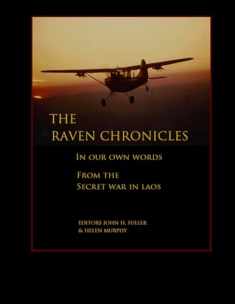
Catkiller 3-2: An Army Pilot Flying for the Marines in the Vietnam War
ISBN-13:
9781682473528
ISBN-10:
168247352X
Author:
Raymond G. Caryl
Publication date:
2018
Publisher:
Naval Institute Press
Format:
Hardcover
264 pages
Category:
Military
,
Aviation
,
Military History
,
Vietnam War
,
Leaders & Notable People
FREE US shipping
Book details
ISBN-13:
9781682473528
ISBN-10:
168247352X
Author:
Raymond G. Caryl
Publication date:
2018
Publisher:
Naval Institute Press
Format:
Hardcover
264 pages
Category:
Military
,
Aviation
,
Military History
,
Vietnam War
,
Leaders & Notable People
Summary
Catkiller 3-2: An Army Pilot Flying for the Marines in the Vietnam War (ISBN-13: 9781682473528 and ISBN-10: 168247352X), written by authors
Raymond G. Caryl, was published by Naval Institute Press in 2018.
With an overall rating of 4.5 stars, it's a notable title among other
Military
(Aviation, Military History, Vietnam War, Leaders & Notable People) books. You can easily purchase or rent Catkiller 3-2: An Army Pilot Flying for the Marines in the Vietnam War (Hardcover, Used) from BooksRun,
along with many other new and used
Military
books
and textbooks.
And, if you're looking to sell your copy, our current buyback offer is $0.53.
Description
Catkiller 3-2 provides unique insights into the role of the tactical air controller, airborne (TACA) in I Corps as seen through the eyes of one of the pilots who flew low-flying, unarmed, single-engine aircraft in support of Marine ground units during the Vietnam War. When Gen. William Westmoreland changed the Marines' role in I Corps into a combat one, the Marines found themselves in need of more fixed wing aircraft to handle the TACA missions. The advance party of the Army's 220th Reconnaissance Aircraft Company (RAC) arrived in Vietnam in late June 1965 thinking they were going to be assigned to III Corps Tactical Zone. However, because of the shortage of existing Marine Birddogs, the 220th was immediately reassigned to I Corps and came under the operational control of the Marines.
No other work details the tactics, restrictions, aerial maneuvers, and dangers experienced by the Army pilots and Marine aerial observers flying these missions. As young lieutenants and captains, they had at their beck and call as much authority to request and control artillery and air strikes as ground commanders of much higher rank. Raymond G. Caryl provides unrivaled examples of the cultural mores, attitudes, and recreational activity of these young pilots and observers supporting the ground forces.


We would LOVE it if you could help us and other readers by reviewing the book
Book review

Congratulations! We have received your book review.
{user}
{createdAt}
by {truncated_author}



